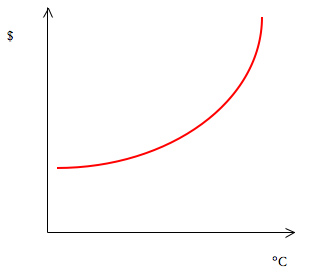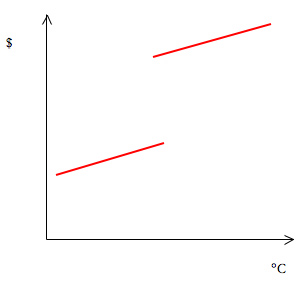
I promised myself the other day that I would write a post about something that I view as a serious fallacy related to development: the notion that dealing with infectious disease will just shift the death toll to hunger, rather than genuinely saving people. This view is misguided for reasons both moral and pragmatic. I will focus on the pragmatic here, since people who advance this neo-Malthusian argument tend to think of themselves as well-meaning but realistic. The first set of arguments have to do with the local capabilities of communities. The second, lesser, set have to do with the nature of the provision of aid. I will quickly examine each in turn.
The three big diseases upon which I will concentrate are HIV/AIDS, malaria, and tuberculosis (TB). These have been rightly banded together as the three most serious global health concerns, with regards to infectious diseases. Each kills more than a million people a year, as well as making far more ill. As a bacterial illness, effective cures exist for all but the most resistant strains of tuberculosis. While no effective cure exists for either malaria or HIV/AIDS, drugs exist that can extend survival dramatically, and mechanisms exist to greatly restrict the spread of such illnesses. The notion that doing so would produce an equally severe problem elsewhere is based on a misconception about how such illnesses affect communities.
Local capabilities
Sick people are not productive people. Communities with high prevalance rates of infectious diseases lose agricultural productivity as members of the working population either become ill or need to spend their time caring for those who are. This is especially bad with regards to HIV/AIDS, which tends to kill people during their most productive years. That has left behind millions of orphans, who further draw upon the capabilities of the community in which they live. All manner of grim statistics could be brought to bear upon this point, but it seems intuitively obvious enough to stand on its own.
The possibilities of simultaneously dealing with the various factors that make extreme poverty endemic are demonstrated by the ’12 research villages’ that Jeffrey Sachs has established throughout Africa. The plan is to have 1000 by 2009. Each receives practical aid at the level of $250 per inhabitant: directed towards dealing with disease, boosting agricultural output, education, and other objectives espoused by the Millennium Development Goals. The whole program can be expressed in terms of seven simple goals:
Fertiliser and seed to improve food yield; anti-malarial bed nets; improved water sources; diversification from staple into cash crops; a school feeding programme; deworming for all; and the introduction of new technologies, such as energy-saving stoves and mobile phones.
The results so far seem to be very good, in terms of declining levels of infectious disease, improved crop yields and educational results, and the like. As with so many other projects, the difficulty is in scaling up the the point where millions of lives can be changed, but the example demonstrates how even a relatively inexpensive aid policy can produce tangible results in a number of crucial areas, without hitting any of the Malthusian barriers imagined by those who say that feeding hungry children just makes hungry adults. Another laudable feature of the program: all aspects of it are implemented and directed at a local level, reducing the extent that neocolonialist intentions can be attributed to the donors or international organizers.
World capabilities
Even in those cases where a sudden burst of attention enormously lessens the burden of disease in a food-strapped community, the difficulties of dealing with that situation are far easier than those of dealing with a place where one of these big three diseases has become endemic.
That’s partly because food provision doesn’t require the delivery of expertise into an area. The lack of qualified medical personnel in places like Sub-Saharan Africa is a major reason for which infectuous disease is so problematic there. The rich world has a double guilt in this capacity: because the austerity programs that were part of the structural adjustment policies of the IMF and World Bank have prevented governments from investing in such human capital, and because lots of rich countries (including Canada and the UK) have been doing all they can to buy up doctors and nurses from the poor world to help address problems in their own health systems.
Conclusions
Obviously, just providing food aid or help with specific problems isn’t adequate for dealing with persistent extreme poverty. That said, it seems foolish to voluntarily refrain from deploying such assistance as is politically and economically viable because of concerns about “feeding those who will die anyhow.” On the global level, the economic emergence of Asia – in which extreme poverty levels have seen amazing reductions in recent decades – shows what is possible even in the face of considerable levels of corruption, disease, and mismanagement.






